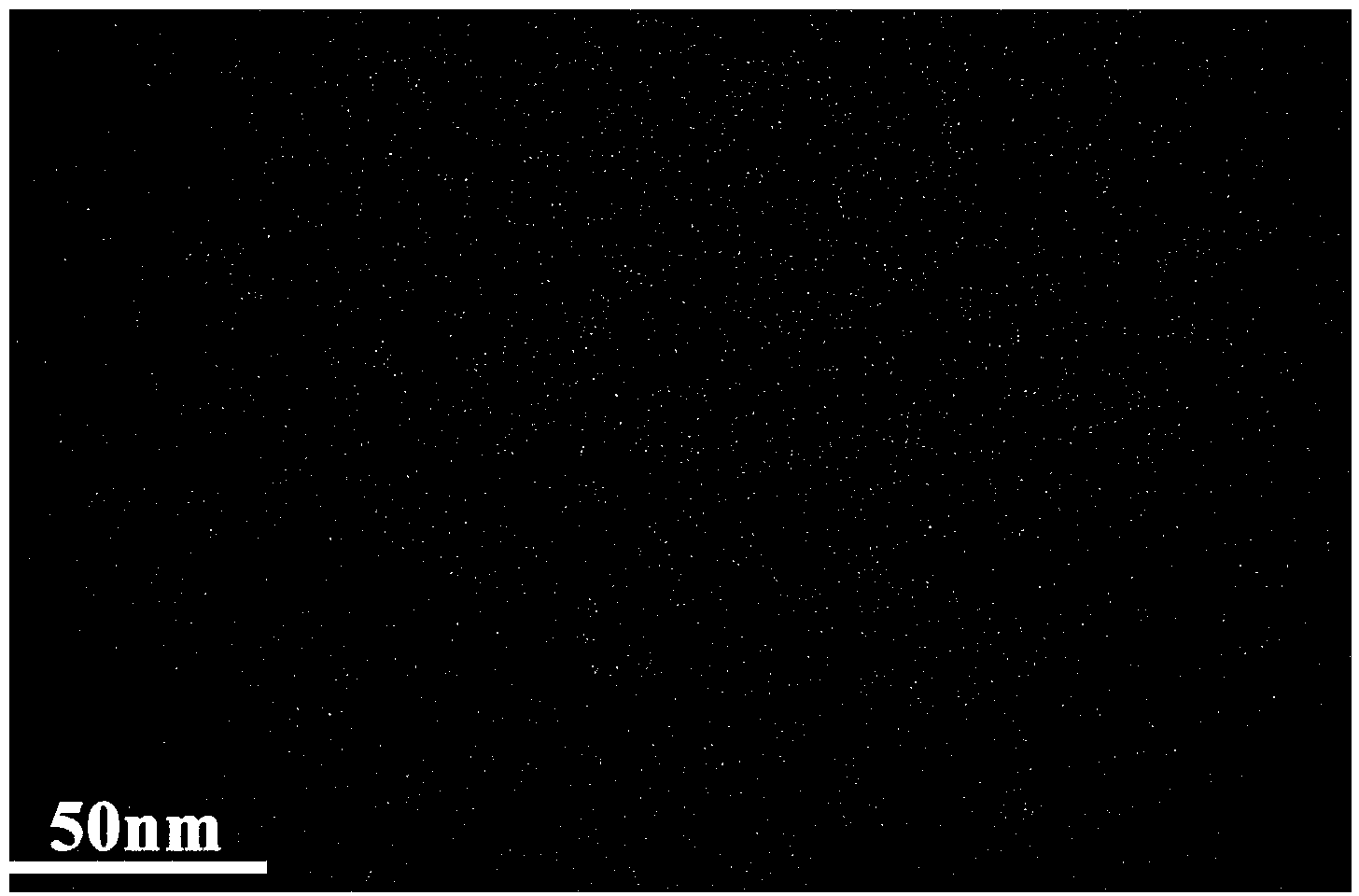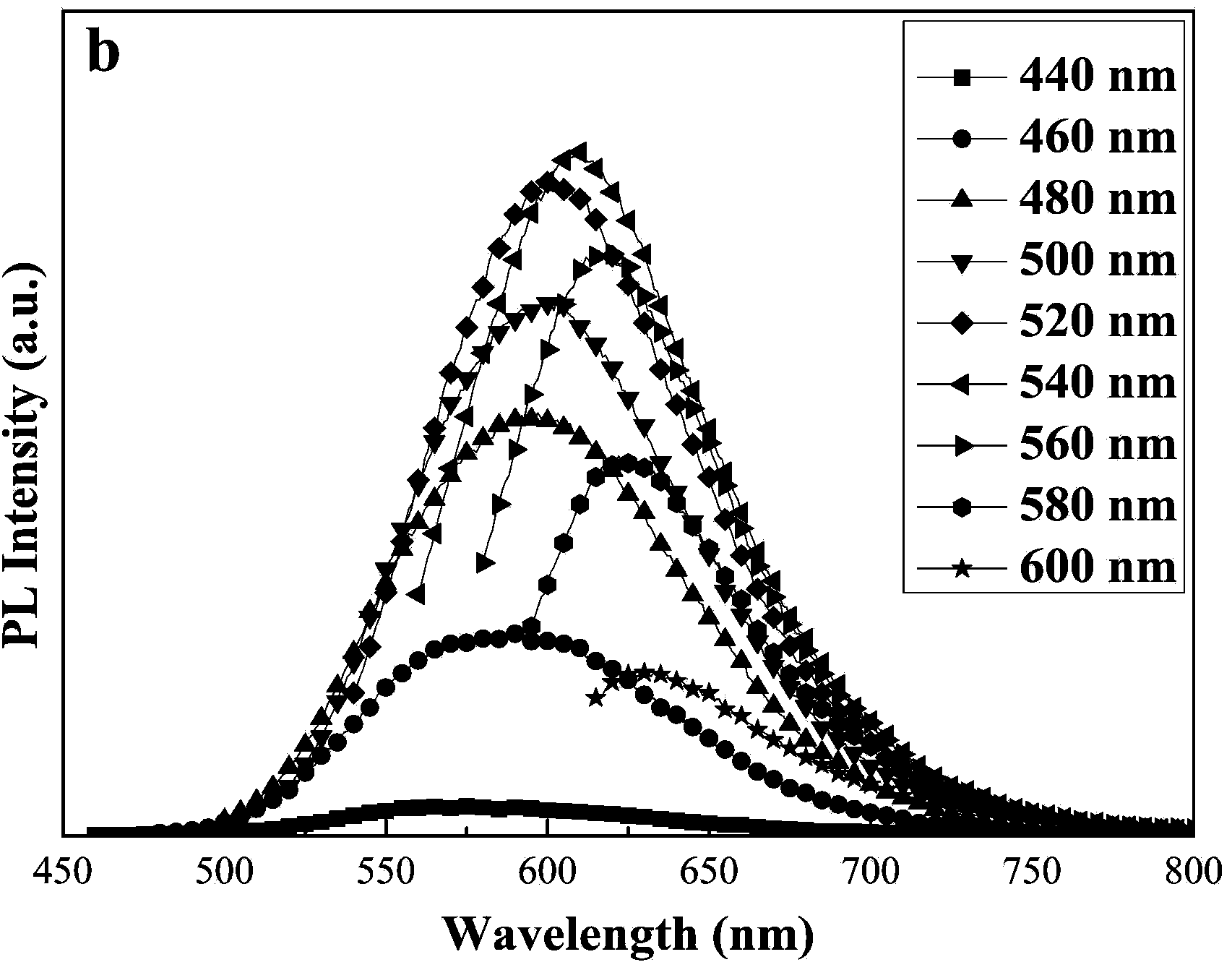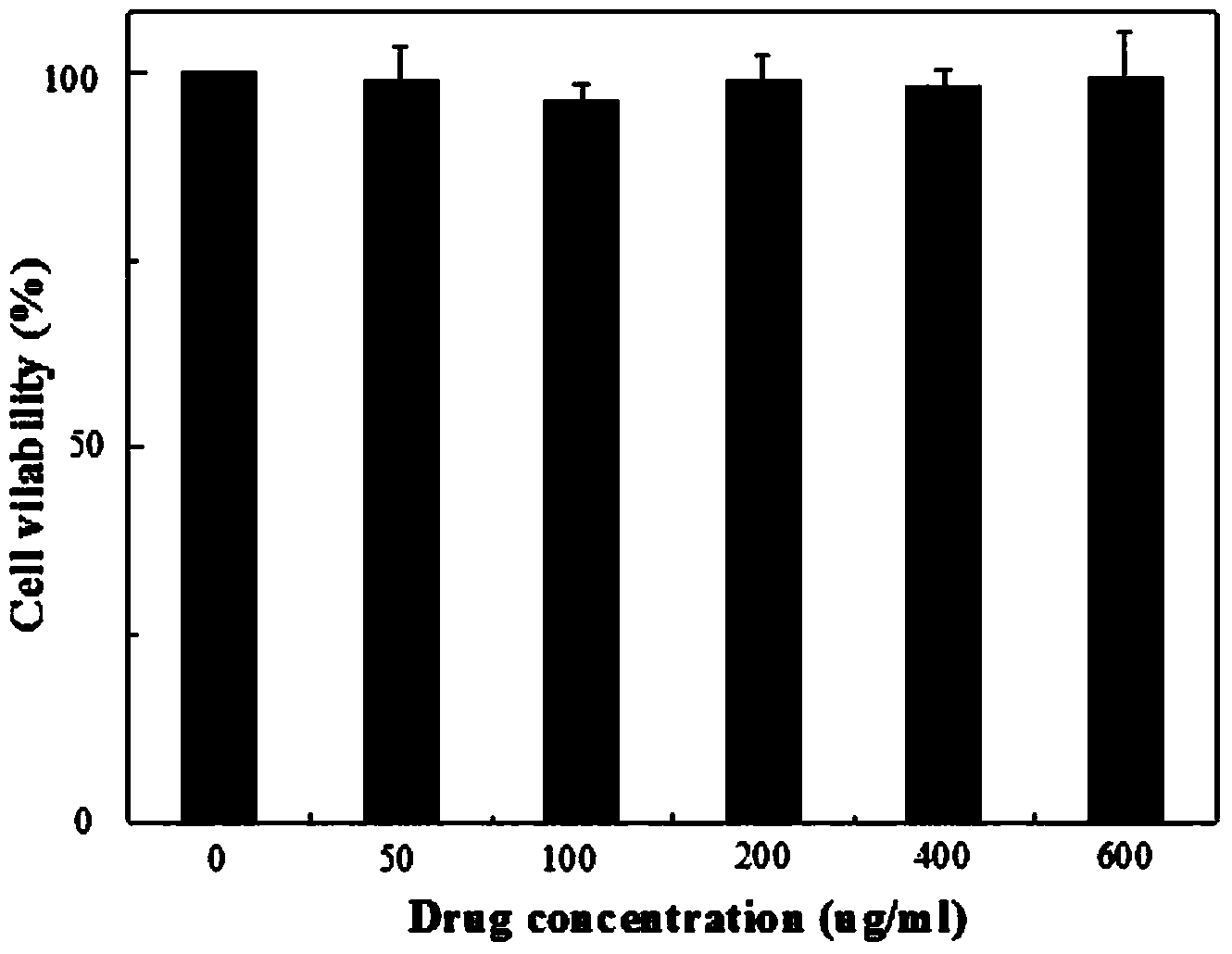Environment-friendly synthetic method of orange nitrogen/sulfur codoped carbon quantum dots
A carbon quantum dot, green synthesis technology, applied in the field of preparation of nano-fluorescent materials, can solve the problems of limiting the large-scale production and wide application of carbon quantum dots, and achieve the effects of short preparation cycle, good repeatability and uniform size distribution
- Summary
- Abstract
- Description
- Claims
- Application Information
AI Technical Summary
Problems solved by technology
Method used
Image
Examples
Embodiment 1
[0031] (1) Take 5 mmol L-cystine and 5 mmol L-serine as raw materials, add 20 ml of pure water, stir and dissolve to obtain a precursor solution.
[0032] (2) Put the precursor solution obtained in step (1) in a reaction kettle, seal it, react at 200° C. for 5 hours, and cool to room temperature.
[0033] (3) centrifuging the solution obtained in step (2) to obtain orange N-S co-doped carbon quantum dots.
[0034] See attached figure 1 , which is a transmission electron microscope image of N-S co-doped carbon quantum dots synthesized under this condition. It can be seen from the figure that the product is carbon quantum dots with uniform size, about 2.5 nanometers in size.
[0035] See attached figure 2 , which is the fluorescence spectrum of N-S co-doped carbon quantum dots synthesized under this condition. From figure 2 It can be seen that the prepared carbon quantum dots exhibit the strongest fluorescence emission at an excitation wavelength of 540nm, and the emissio...
Embodiment 2
[0038] (1) Weigh 5mmol L-cystine and 5mmol L-proline respectively, and then add 20ml of water to obtain the precursor solution:
[0039] (2) Put the precursor solution obtained in step (1) in the reaction kettle, seal it and react at 200°C for 2 hours, and cool to room temperature:
[0040] (3) Centrifuge the solution obtained in step (2) to obtain orange N-S co-doped carbon quantum dots:
[0041] See attached Figure 4 , which is a transmission electron microscope image of N-S co-doped carbon quantum dots synthesized under this condition. It can be measured from the figure that the size of the product is about 6 nm. Figure 5 The fluorescence spectrogram shows that the prepared carbon quantum dots show the strongest fluorescence emission at the excitation wavelength of 540nm, and the center of the emission peak is located at 607nm, which is orange light.
Embodiment 3
[0043] (1) Dissolve 5mmol L-cystine and 5mmol L-alanine silk in 20ml water to obtain a precursor solution:
[0044] (2) Put the precursor solution obtained in step (1) in a reaction kettle, seal it, react at 200° C. for 5 hours, and cool to room temperature.
[0045] (3) centrifuging the solution obtained in step (2) to obtain orange N-S co-doped carbon quantum dots.
[0046] See attached Figure 6 , which is a transmission electron microscope image of N-S co-doped carbon quantum dots synthesized under this condition. It can be measured from the figure that the size of the product is about 8 nm. Figure 7 The fluorescence spectrum shows that the prepared carbon quantum dots show the strongest fluorescence emission at the excitation wavelength of 540nm, and the center of the emission peak is located at 604nm, which is orange light.
PUM
| Property | Measurement | Unit |
|---|---|---|
| particle diameter | aaaaa | aaaaa |
| size | aaaaa | aaaaa |
| size | aaaaa | aaaaa |
Abstract
Description
Claims
Application Information
 Login to View More
Login to View More - Generate Ideas
- Intellectual Property
- Life Sciences
- Materials
- Tech Scout
- Unparalleled Data Quality
- Higher Quality Content
- 60% Fewer Hallucinations
Browse by: Latest US Patents, China's latest patents, Technical Efficacy Thesaurus, Application Domain, Technology Topic, Popular Technical Reports.
© 2025 PatSnap. All rights reserved.Legal|Privacy policy|Modern Slavery Act Transparency Statement|Sitemap|About US| Contact US: help@patsnap.com



